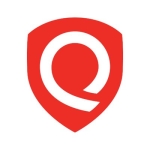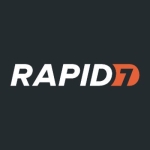What is our primary use case?
The primary use case is mainly for updating servers and client PCs. These are the main devices we update or patch with the software.
How has it helped my organization?
The reason we went forward with this software is due to the fact that we needed a solution to patch servers, and it wasn't being done on a regular schedule.
We were using Microsoft Endpoint Manager to configure the update range for our devices across the organization. However, it wasn't getting all of the patches to the software we deployed regularly. We implemented this to supplement the updates alongside patch management. We didn't have a robust patch management solution which made the process of updating and installing cumbersome. Vicarius expedited the process for us.
What is most valuable?
We did not have any visibility before over the vulnerabilities that were within our network, other than what independent research provided. We'd have to read news and blogs. Now we have a simplified dashboard that highlights those vulnerabilities, including zero-days and the risk level of each vulnerability.
The dashboard has been really great. We can now see trends. We can see the vulnerabilities that are being detected and mitigated.
It's helped us with challenges in an educational organization. It's made a big impact. It's improved the level of flexibility we have to deploy patches. We do get a lot more granularity and can see what kind of patches we want to deploy, the timeframe, and the groupings and various options we have for deployment. If we had devices that only need a certain patch due to specific software and other schools don't, we can isolate out groups and deploy patches to specific groups.
The solution consolidates vulnerability discovery, prioritization, and remediation all in one single platform. It eliminates the need for other services and simplifies management while expediting and streamlining vulnerabilities and patch management.
We've been able to reduce mean time to remediate vulnerabilities. We're on a good schedule for implementing updates and patches based on the level of severity. However, we can deploy patches on the fly if the need is severe and critical. This is the first time we've implemented patch management in this organization, so I can't speak to how much time has been saved. That said, prior to implementation, all patches were remotely handled by Windows updates. The reduction in mean time has positively affected operations as it's made it easier on our side. IT no longer has to manually research and do analysis. That part is almost non-existent. In the past, there was a lot of research into updates and trends. Vicarius does all the hard work for us. We get real-time, accurate information on the latest cybersecurity trends in order to respond accordingly. They have a robust library of scripts that we can deploy as opposed to not just knowing there is a vulnerability but having to create a script.
We've been able to reduce the amount of time spent on patching. We used to do it manually. If it wasn't possible to do it through a Windows update or if the Intune process did not get the patch applied, we would have to try and get all devices across all organizations to the latest versions and make sure the software was also patched. It's saved us an incredible amount of time. We no longer have to touch those systems. We can just rely on the automated system and the schedules we've set. It's a huge time saver. It's saved us hundreds of hours.
Patchless Protection helps protect us from vulnerabilities that may not yet have patches from the manufacturer. I've used it for a piece of software that we don't have a patch for. It monitors that software, analyzes it, and makes sure nothing nefarious is going on when it's vulnerable.
The scripting engine enables us to create custom scripts. I haven't written any scripts; however, I have used it to push out an upgrade, for example. They have a ton of scripts provided by the community. Since I started with the solution, the growth of the library has been extensive. I've been excited with what I've seen and I know I'll be able to use it in the future.
They have a great forum. I haven't used it and haven't felt like I needed to, although I have used their FAQ and documentation, and that's been really helpful.
It's great for keeping our environment protected. It does an extremely good job of patching everything we need it to.
What needs improvement?
While it's not under their control, I would like to see more ways to get some apps with vulnerabilities patched. They do a good job of giving us a good inventory of what we really need to keep an eye on. However, if they can work with the vendors a bit more to find some solutions to open vulnerabilities, it would be ideal.
I've given Vicarius some feedback in regards to granular naming or groupings of devices. We have so many sites that I've asked if it's possible to make changes. For the most part, they've been helpful in addressing this. They've been really trying to take any feedback to their engineers and they do try to implement our requests.
We deploy our applications via Microsoft Endpoint Manager to our devices. However, when Vicarius rolls out a patch, and we roll it out via Microsoft, the version changes on that application. Endpoint Manager will determine if the app is no longer installed and try to update the app. It needs to not trigger Microsoft so that Microsoft no longer thinks the app is installed. However, the workaround is that we can install it from their platform console instead of Microsoft, and that seems to fix the issue.
They do have a search function for device names. They already have a list of all our devices, however, if I'm looking for something, sometimes the name does not come up at the top of the list. I have to search. And when you have thousands of devices, that process can become quite tedious. I've given this feedback and they've mentioned that's an issue they want to fix.
For how long have I used the solution?
I've used the solution for about a year.
How are customer service and support?
Technical support and VicariousRx (vRx) has been great. They are professional and responsive. We've met with them frequently - once or twice a month - to go through questions we have or them getting feedback after an implementation. Even their chat system has been helpful. I've used it to ask questions, and I've gotten a response within a few minutes. The communication is great.
How would you rate customer service and support?
Which solution did I use previously and why did I switch?
Compared to other solutions, it's more robust as a remediation solution. Not only dos it handle patch management, but we can deploy applications from Vicarius instead of Microsoft or any other MDM. We can leverage their inventory management as well.
Their scripts have helped us. We needed to upgrade Windows 10 to Windows 11, and they had a great script that was community-driven. We were able to leverage that to upgrade a lot of our computers remotely. We could send the script and have it run in the background and it's saved us a lot of time.
How was the initial setup?
I ran into one issue when I was deploying their software to our servers. However, it turned out to be a configuration change that had to be done on our end. That's the only issue. We've had no issues deploying.
It did take a while to deploy more due to my schedule. That said, it shouldn't take too long. If they had a more automated setup system, it would be ideal. Some I have to deploy manually.
What other advice do I have?
We're a customer and end-user.
As a unified vulnerability remediation platform, I'd suggest that clients who already have a patch management tool consider Vicarius. There are many great products on the market. However, from personal experience, if someone is looking for something better, I'd recommend Vicarius. Their team is very helpful. We've dealt with vendors where product managers don't have control. Vicarius has a team that is extremely helpful, accommodating, responsive, and knowledgeable. They made the whole setup process easy, and if we need help, they are ready to assist. When you can't find someone who is able to give you the support you need, it's frustrating. Vicarius is 100% ready to provide solutions when they see a problem, and they are great at letting us know about the roadmap of features. They're on top of making our systems better.
We noted the benefits of Vicarius pretty immediately - within a month or so. That's when I first started deploying it to a large amount of devices. I was able to see the progress of the updates I was pushing and the remediations. The benefits were pretty apparent right away.
I'd rate the solution nine out of ten. They are a young company, and I see a lot of good things on the horizon. Their team is growing, and they will be implementing a lot of stuff. They are going to have a well-polished product very soon.
Disclosure: PeerSpot contacted the reviewer to collect the review and to validate authenticity. The reviewer was referred by the vendor, but the review is not subject to editing or approval by the vendor.

















